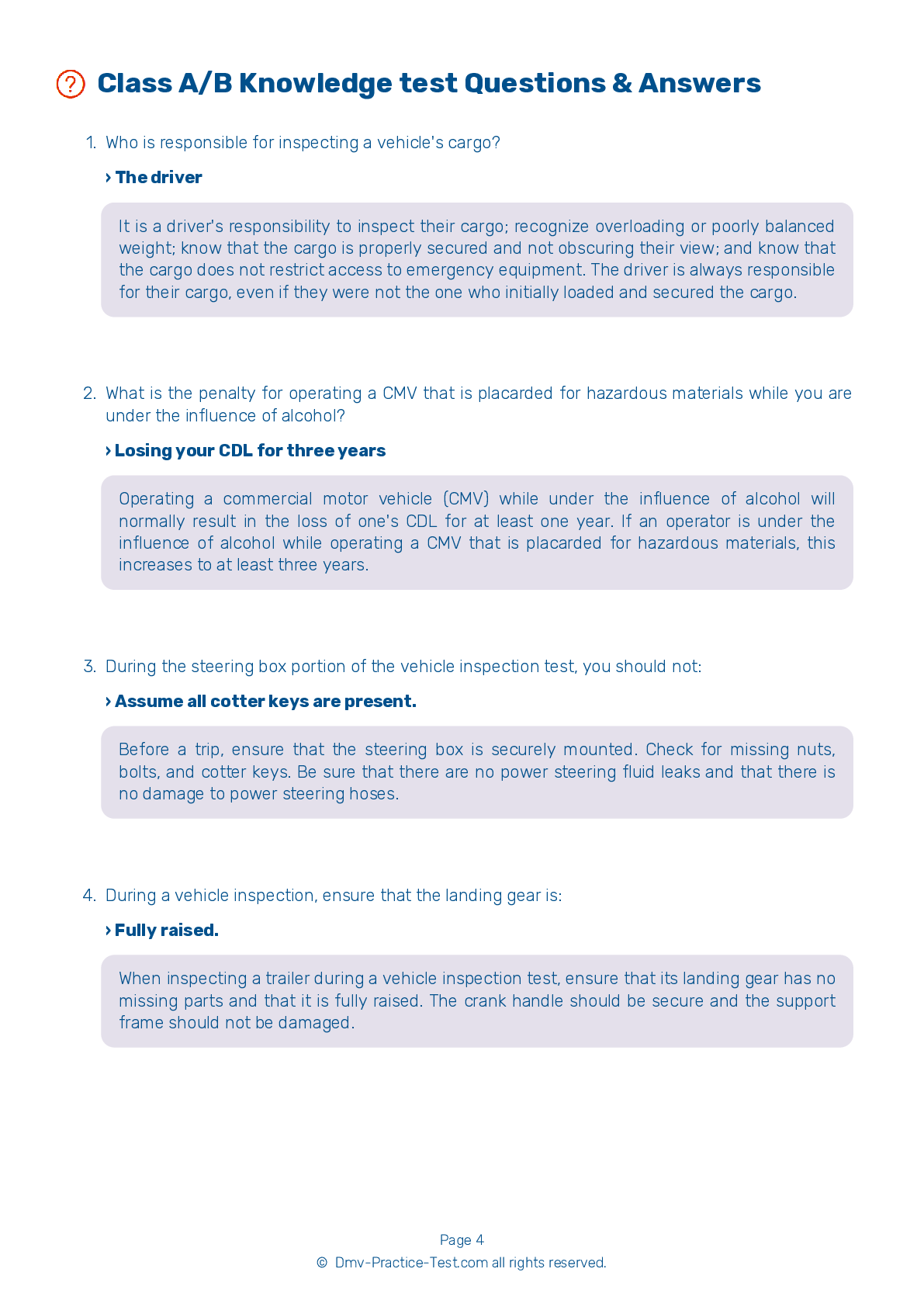Class A Driving Test | Texas 2025 #2 Page 6 of 10
Train for FREE online with our Texas class A license test. The official exam test consists of several obligatory parts, with all of them checking your knowledge of different blocks of road rules. If you need to obtain a TX CDL class A permit in 2025, practice as much as possible. Free sample tests published on our website will help you check and improve your knowledge and boost your grades. Please bear in mind that CDL class A requirements may vary from state to state.
36 . During a static leakage test, the maximum leakage rate for a double combination vehicle is:
When performing a static leakage test on a double combination vehicle with air brakes, the leakage rate should be no more than 3 psi in one minute. If air leaks from the air brake system at a quicker rate, the vehicle should not be driven because something likely needs to be repaired.
37 . When you press the brake pedal in a vehicle with S-cam brakes, air pressure pushes out the rod and moves the:
When pressing the brake pedal in a vehicle with S-cam brakes, air will enter the brake chambers. The added air pressure will push out the rods and move slack adjusters, twisting the brake camshafts.
38 . If your vehicle is equipped with a cargo lift, you should ensure that:
When checking a cargo lift as part of your vehicle inspection test, you should check for leaking, damaged, or missing parts. The lift must be fully retracted and latched securely.
39 . In cold weather, an alcohol evaporator should be checked and filled:
An alcohol evaporator can help prevent ice from building up in an air brake system. In cold weather, the evaporator should be checked and refilled every day.
40 . Accelerating roughly is:
When accelerating, speed up smoothly and gradually so your vehicle does not jerk. Rough acceleration can cause mechanical damage.
41 . Front wheel braking works:
Front wheel braking is effective under all road conditions. It is unlikely that you will experience a front wheel skid, even on ice.
42 . If carrying a heavy load that is slowing you down, you should:
The right lanes of a roadway are generally intended for vehicles traveling more slowly than surrounding traffic. If being slowed down by a heavy load, you should stay in the right lane.
See the exact questions that will be on the 2025 Texas DMV exam.
99.2% of people who use the cheat sheet pass the FIRST TIME
Lillian MCcranie explains how our CDL study guide was helpful in passing the exam and recommends it to everyone.
Cameron tells us how he purchased the CDL exam, and found it to be a useful tool which helped him pass the exam and find a job.



